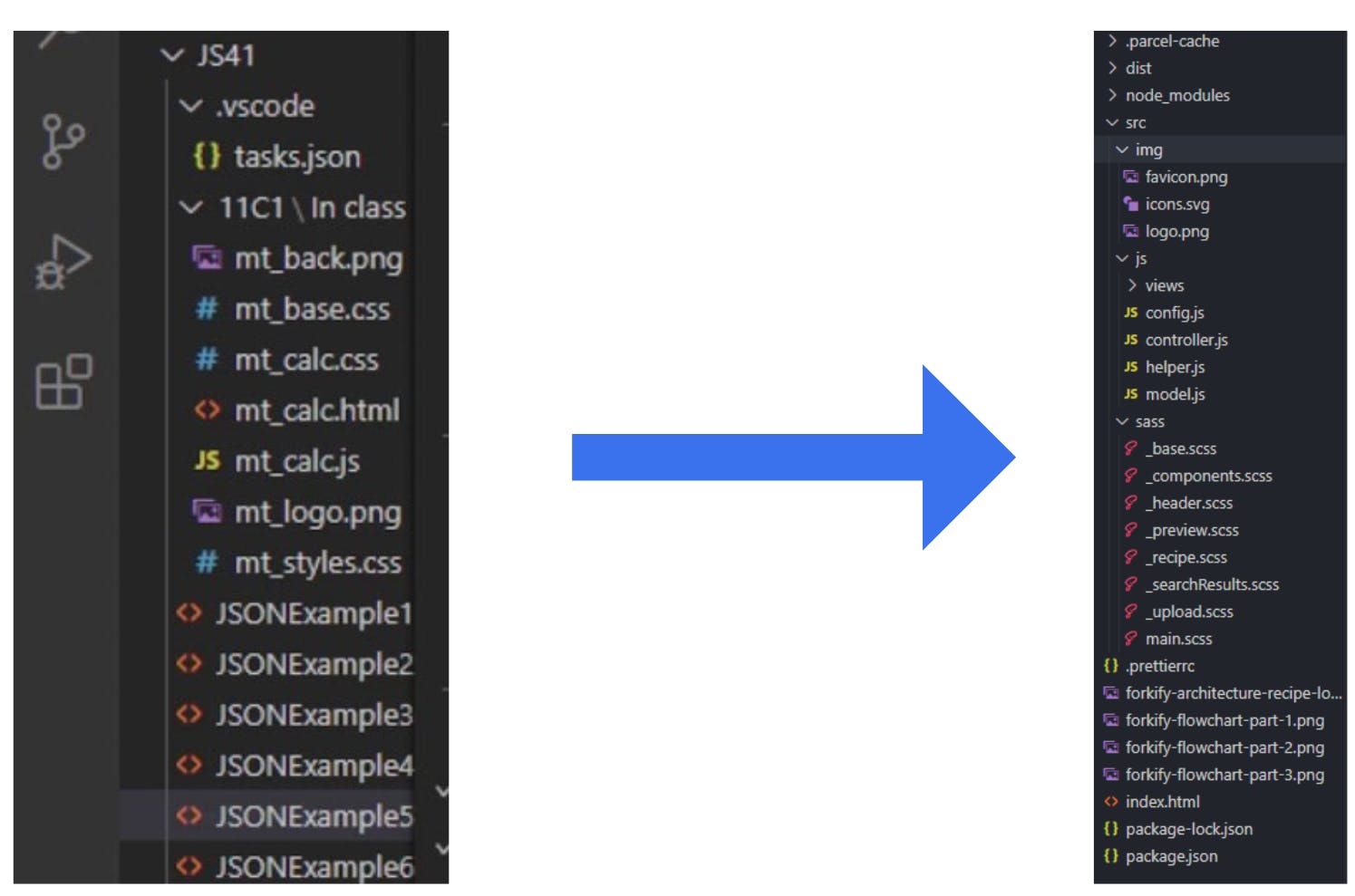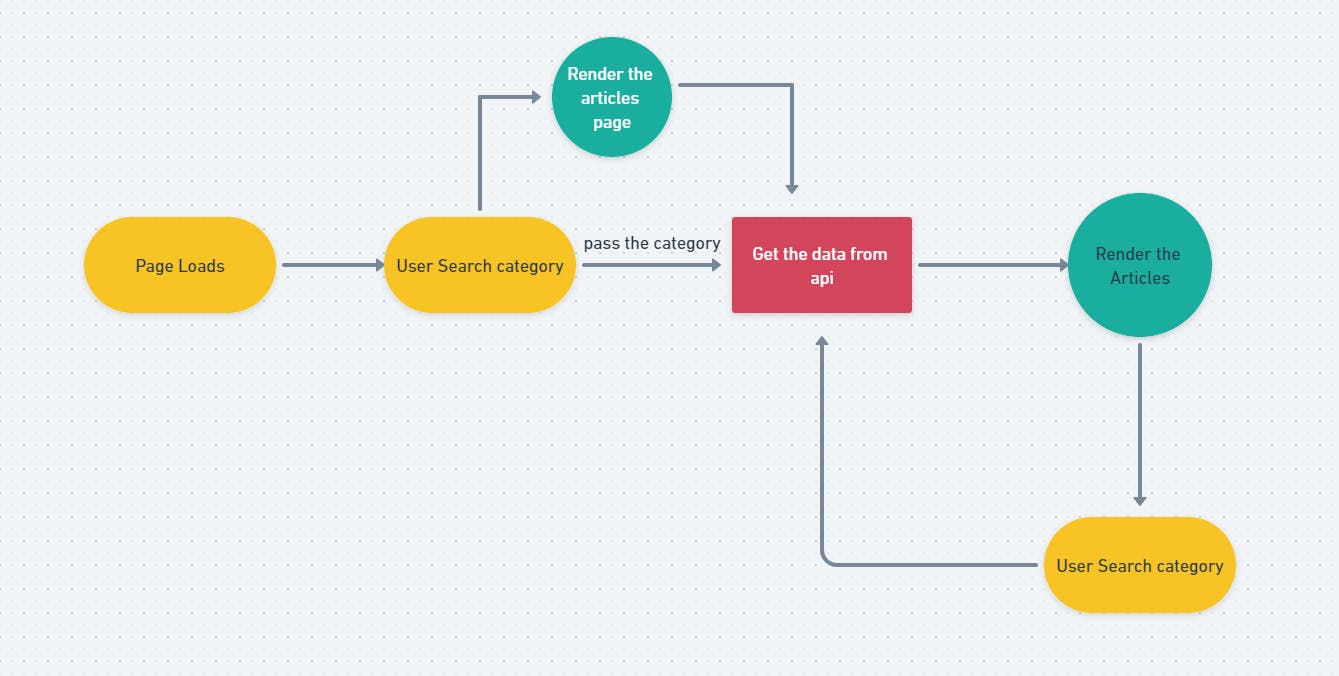
A Guide to Navigating the Project Development Maze
A Journey Through Effective Project Development Strategies

When adding a new feature to your project, you must think about how that feature will interact with your current code. You don't want to add a new feature and have to undo many changes later on.
In this blog, I'll be your helpful companion, sharing the tips I've learned from my own experiences.
When we begin a project, we have a clear vision of what we want to achieve, such as having a beautiful UI, a sidebar, a contact form, and more. However, if we don't plan our project structure properly, we might end up with a messy and disorganized outcome, as shown in the left image.
On the other hand, if we follow good project development practices, we can create an application that is easily scalable and manageable, just like the one shown in the right image. This means structuring our project in a way that allows for future growth and makes it easier to handle and maintain.

5 simple steps
These steps have helped me achieve great results, and I hope they can be helpful for you too!

👤User Narratives - Descriptive summaries of application functionality from the user's viewpoint.
✅User-Driven Feature Selection - Making decisions on application features based on User Narratives and their needs.
🎢Feature Flowchart - A visual representation that maps out all the features of an application in a sequential manner for better understanding and visualization.
🪄Library Selection Process - Making decisions on which libraries to utilize based on project requirements and criteria.
🪜Architecture Selection - Choosing the project architecture based on project requirements and design considerations [May be not required if you going to use a framework like React]
Now, let's dive deep into each step and explore them in detail 🤿
User Narratives
Imagine yourself as an end-user. What would you like to do or achieve? Let's focus on your needs and how we can provide a beneficial solution. When writing down what users need, use this simple format: "As a [type of user], I want to [action] so that [benefit]."
For example: As an end-user, I want to hover over other user's profiles so that I can see their profile summary.
User-Driven Feature Selection
Feature Selection is all about choosing which features to include in an application based on what users want and need. By user narratives and understanding their requirements, we can prioritize and decide on the most important features. This approach ensures that the application is designed with the user in mind, making it more useful and enjoyable for them.
For example, We want to give users the ability to hover over a user's profile and listen for the mouse-over event. When they do this, a pop-up will appear next to the user's profile, showing a summary of their profile information, such as the number of followers and followings they have. We can name this feature as user profile hover feature.
Feature Flowchart
Imagine having a Feature Flowchart, a handy visual guide that lays out all the features of an application in a step-by-step order. It helps you understand and visualize how user events and data move throughout the application. With this flowchart, you can easily track the path of user actions and see how information flows from one part of the application to another. The best part is that you don't need to create a final flowchart right from the start. It's a flexible tool that allows you to iterate and improve the flowchart as you go, making it a helpful aid in planning and building your application.
Remember, creating the perfect flowchart doesn't have to happen right from the start. It's an ongoing process that grows as your project develops. You can start with a basic flowchart and refine it as you go along, adding more details and making improvements along the way.
We have multiple options for creating the flowchart. You can either sketch it out on paper or take advantage of various applications, I personally use - https://whimsical.com/flowcharts

Library Selection
The library Selection Process is all about finding the right tools to empower your project's success. It involves making thoughtful decisions about which libraries to use based on your project's specific requirements and criteria. You want to choose libraries that align with your project's goals and offer the functionalities you need. By carefully considering factors such as compatibility, performance, community support, and documentation, you can ensure that the libraries you select will enhance your project and make development easier.
For Example, In React project to add forms to the application we can use Formik
Architecture Selection
The choice of architecture plays a crucial role in ensuring a well-organized and maintainable codebase. Architectures like MVC (Model-View-Controller), MVVM (Model-View-ViewModel), and MVP (Model-View-Presenter) provide clear guidelines on how to structure and manage code.
Utilizing architectures offers several advantages:
Dividing the application into different parts makes it easier to manage and modify the code.
Well-defined roles and responsibilities enable straightforward testing of individual parts. This leads to a more reliable codebase and helps catch bugs early on.
These architectures promote a structured approach to coding. This means you can navigate and understand the codebase more easily, saving time and effort.
Clear separation of components allows for building in a modular way. This enhances collaboration among developers and encourages code reuse, making development more efficient.
Libraries or frameworks like React, Angular, Vue.js, Ember.js, and Svelte often provide their own mechanisms for managing application state and handling component interactions, which can align with the principles of these architectural patterns. React follows a component-based approach, which can naturally fit into the concepts of MVC, MVVM, or MVP.
Conclusion
In conclusion, when adding new features to your project, it's crucial to consider their interaction with your existing code to avoid the need for extensive changes later on. Planning the project structure properly is essential for creating a scalable and manageable application.
So, let's embark on our project development journey with these insights and create remarkable applications that meet and exceed user expectations.
